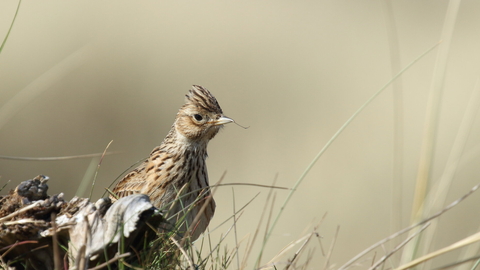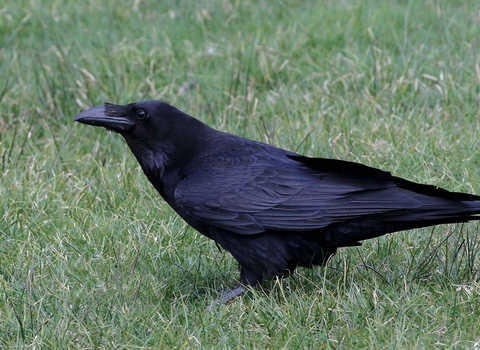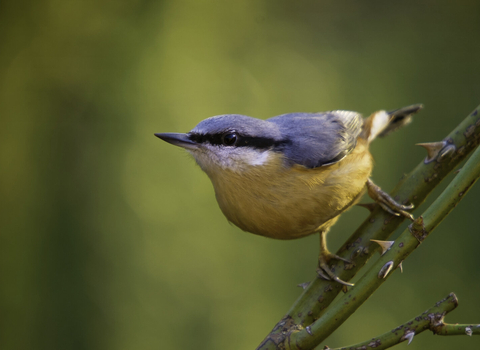
Vaughn Matthews.
Cae Bryntywarch
Location
Know before you go
Dogs
This prevents disturbance to ground nesting birds.
When to visit
Amseroedd agor
Open access reserve.Amser gorau i ymweld
Spring, summer and autumnAm dan y warchodfa
The meadow is home to a range of colourful plants. In spring it is flecked with the pinks of common spotted and heath spotted orchids, which are then followed by the yellows of bog asphodel and dyer’s greenweed. In the summer, the dense lilac-blue heads of devil’s-bit scabious flowers add to the colourful display.
Standing towards the top of the meadow gives good views of the surrounding farmland. Buzzards and red kites can sometimes be seen soaring overhead and in the spring the distinctive call of the cuckoo can sometimes be heard.
Habitats:
Hedgerows, Lowland Meadows, Rhos Pasture, Rivers and Streams
Species:
Bird's-foot-trefoil, Bog Asphodel, Bracken, Bramble, Brown Hare, Buzzard, Common Spotted Orchid, Cottongrass, Cross-leaved Heath, Cuckoo, Devil's-bit Scabious, Dyer's Greenweed, Great Burnet, Knapweed, Meadow Thistle, Quaking-grass, Ragged-Robin, Red Kite, Ribwort Plantain, Saw-wort, Skylark, Sweet Vernal-grass, Tormentil, Wild Angelica, Yorkshire-fog



